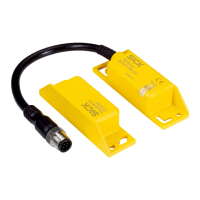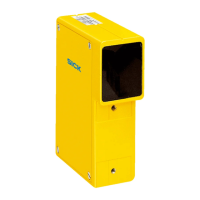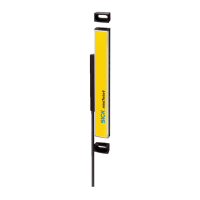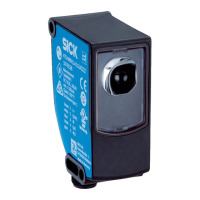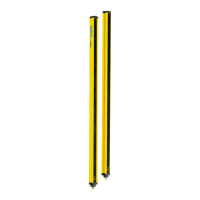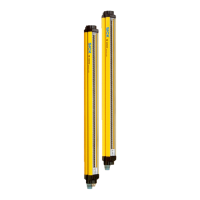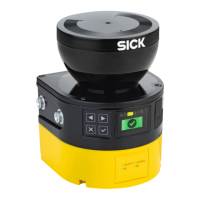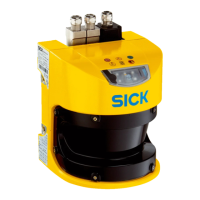where:
•
S = minimum dis
tance in millimeters (mm)
•
T = stopping/run-down time for the entire system in seconds (s)
(Response time of the safety laser scanner + machine’s stopping/run-down time,
incl. response time of the machine’s control system and signal propagation time)
The approach speed is already included in the formula.
4.3.10 Mobile hazardous area protection
The safety laser scanner is mounted with a horizontal scan plane in a mobile applica‐
t
ion, like on an automated guided vehicle. In mobile hazardous area protection, the
safety laser scanner protects the hazardous area created by the vehicle’s movement.
The safety laser scanner detects a person’s legs. The protective field is parallel to the
direction of approach.
Figure 21: Mobile application in horizontal operation for hazardous area protection
NOTE
•
In a mobile applic
ation, a resolution of 70 mm (leg detection) is sufficient for
detecting people. By contrast with stationary hazardous point protection, this is
also true for a low mounting height, as the safety laser scanner moves together
with the vehicle.
•
In the following calculation examples, only the vehicle speed is taken into account,
not the speed of a walking person. This is based on the assumption that the per‐
son recognizes the danger and stands still.
4.3.10.1 Protective field
The protective field must be designed in such a way that it recognizes a person at the
la
test when he or she is at the minimum distance from the hazardous point. The mini‐
mum distance allows the vehicle to stop in time before it reaches a person or an object.
In mobile hazardous area protection, the minimum distance typically defines the pro‐
tective field length required. When calculating the protective field length, the impact of
turning must be considered separately.
4 P
ROJECT PLANNING
32
O P E R A T I N G I N S T R U C T I O N S | nanoScan3 I/O 8024596/15VP/2019-11-15 | SICK
Subject to change without notice

